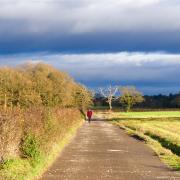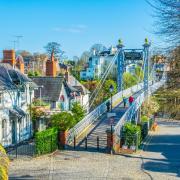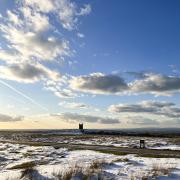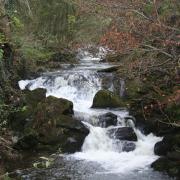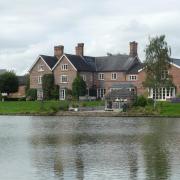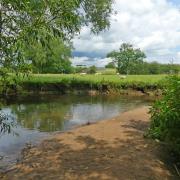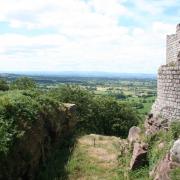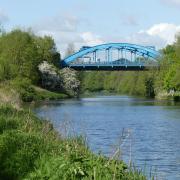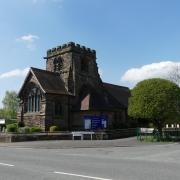Our history man seeks out Shocklach and discovers Normans, a wonderfully preserved church and victims of the plague.
Deep in the southwestern corner of Cheshire lies the ancient village of Shocklach, just half a mile from the English/Welsh border separated only by the River Dee.
Standing just six miles away from Wrexham and 13 miles from Nantwich Shocklach has a wonderful history dating to Norman times.
To the northern edge of the parish remain substantial earthworks from an early post-Conquest Norman castle known as a motte erected around 1100 AD by the Barons of Malpas.
The original fortification was constructed from earth and timber and situated at the top of a steep escarpment overlooking a stream below.
Shocklach Castle as it was known is of particular importance in the area, being one of a group constructed to discourage Welsh raids on the rich farming lands of South Cheshire.
Robert FitzHugh, the Norman lord of the manor, having dispossessed the Saxon proprietor named Dot of his lands held Shocklach until his own death in the early 12th century.
While the castle is long since gone the same can’t be said for nearby St Edith’s Church, built by FitzHugh around 1150 AD, and today one of the finest and best-preserved Norman churches in the county. Standing in great isolation in the Cheshire countryside the church is dedicated to Edith of Polesworth, thought to have been a sister of Edward the Elder.
There are no other ancient buildings in sight of St Edith’s Church, making this one of the most obscure places of worship across Cheshire. Once in the possession of St John’s College in Chester, following the dissolution, both the church and nearby rectory were granted to Sir Henry Fanshaw of London.
In the 17th century, St Edith's became the burial place for the victims of the plague of 1625. The church records include many entries relating to the dead, including John and Elizabeth Handley and their two children.
The register reads: '1625, John and Elizabeth Handley children of John Handley the elder fell both sick on Friday 23rd September and the aforesaid John deceased on Sunday 25th September at around the time of our service. John was carried to the churchyard by his mother Elleyn and Randle Gylbert his half-brother and was buried in the churchyard without service, ringing or any other ceremony.' A few days later Elizabeth succumbed to the plague and an entry in the register was duly recorded.
This beautiful Norman church is well preserved and virtually unchanged since it was constructed in the 12th century. The nave dates from the 12th century, the chancel was added around the 14th century and much of the furnishings date back to the 17th and 18th centuries.
One item of great interest within St Edith’s is a piece of window glass etched using a diamond ring during the 18th century, which carries the following message: 'I Robt. Aldersey was here the 31st day of Oct. 1756 along with John Massie and Mr Derbyshire. N.B. The roads were so bad we were in danger of our lives.'
My film, St Edith and the Normans, shot at Shocklach, can be viewed for free with many other local history films by visiting my channel, youtube.com/Tvpresenter4history.
Things to look out for
Norman doorway at St Edith’s Church, circa 1150 AD
Etched window glass by Robert Aldesey dated to 1756
Ancient solid oak pulpit bearing the date 1687
Medieval stone cross in the churchyard




